A) I,III,IV,II
B) IV,II,III,I
C) III,I,II,IV
D) I,II,IV,III
E) All carboxylic derivatives exhibit similar reactivities with H2O.
G) All of the above
Correct Answer

verified
Correct Answer
verified
Multiple Choice
In the reaction shown below,which product(s) would be formed? 
A) ![]()
B) ![]()
C) ![]()
D) ![]()
E) both A and B
G) B) and D)
Correct Answer

verified
Correct Answer
verified
Multiple Choice
What would be the other product of the following reaction? 
A) ![]()
B) ![]()
C) ![]()
D) ![]()
E) ![]()
G) B) and E)
Correct Answer

verified
Correct Answer
verified
Multiple Choice
What would be the product of the following reaction? 
A) C6H5CO2H
B) C6H5CH2CO2H
C) C6H5CH2OH
D) C6H5CH2CH2NH2
E) C6H5CH3
G) A) and E)
Correct Answer

verified
Correct Answer
verified
Multiple Choice
What would be the organic product of the following reaction? (18O is a rare oxygen isotope.) 
A) ![]()
B) ![]()
C) ![]()
D) More than one of these.
E) None of these.
G) C) and D)
Correct Answer

verified
Correct Answer
verified
Multiple Choice
Substitutions at sp2 carbons do not occur by an SN2 mechanism,but rather by way of a "tetrahedral intermediate." The tetrahedral intermediate shown could occur in which reaction? 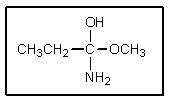
A) methyl propanoate + ammonia
B) propanamide + hydroxide
C) propanoic acid + methanol
D) propanamide + ethanol
E) None of these.
G) C) and D)
Correct Answer

verified
Correct Answer
verified
Multiple Choice
What would be the proper name of the following? 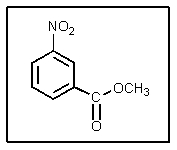
A) 3-nitro-methylbenzoate
B) methyl 3-nitrobenzoate
C) 3-nitro-methoxybenzoate
D) 5-nitro-methylbenzoate
E) 3-nitrocarboxymethylbenzene
G) A) and D)
Correct Answer

verified
Correct Answer
verified
Multiple Choice
How many different CH3 signals would you expect in the room-temperature proton NMR spectrum of the molecule below? 
A) One
B) Two
C) Three
D) Four
E) Five
G) A) and B)
Correct Answer

verified
Correct Answer
verified
Multiple Choice
Rank the following carboxylic acid derivatives in order of decreasing reactivity toward hydrolysis (most reactive on left) : 
A) D > B > A > C
B) C > A > B > D
C) B > D > A > C
D) A > B > D > C
E) D > B > C > A
G) A) and D)
Correct Answer

verified
Correct Answer
verified
Multiple Choice
Which of the following would be most likely to result from saponification of a natural triglyceride? 
A) ![]()
B) ![]()
C) ![]()
D) ![]()
E) ![]()
G) A) and D)
Correct Answer

verified
Correct Answer
verified
Multiple Choice
Which functional group has the lowest IR absorption frequency?
A) ![]()
B) ![]()
C) ![]()
D) ![]()
E) ![]()
G) B) and C)
Correct Answer

verified
Correct Answer
verified
Multiple Choice
What would account for the fact that the molecule below racemizes easily,despite having three chiral centers? 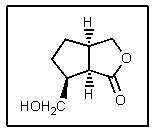
A) Lactones are configurationally unstable
B) Molecule loses CO2 easily
C) Enolization occurs easily
D) Intramolecular transesterification occurs easily
E) This molecule is not chiral.
G) D) and E)
Correct Answer

verified
Correct Answer
verified
Multiple Choice
What would be the major expected product from the reaction shown below? 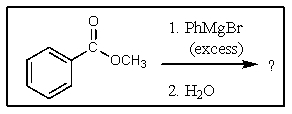
A) ![]()
B) ![]()
C) ![]()
D) ![]()
E) ![]()
G) C) and D)
Correct Answer

verified
Correct Answer
verified
Multiple Choice
What structure is not an intermediate in the following reaction? 
A) ![]()
B) ![]()
C) ![]()
D) ![]()
E) None of the above.
G) B) and E)
Correct Answer

verified
Correct Answer
verified
Multiple Choice
Which of the following is not an intermediate in the Hofmann rearrangement of ethanamide to methylamine? 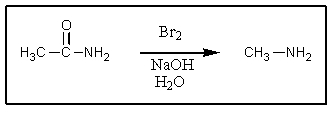
A) ![]()
B) ![]()
C) ![]()
D) ![]()
E) ![]()
G) All of the above
Correct Answer

verified
Correct Answer
verified
Multiple Choice
How can the importance of the following resonance be evaluated? 
A) Charged resonance structures are always more important.
B) The C=O IR stretch for amides is significantly different than for other C=O groups.
C) The water solubility of amides implicates charged structures.
D) The C-N rotational barrier can be determined by NMR.
E) More than one of the above are correct.
G) B) and C)
Correct Answer

verified
Correct Answer
verified
Multiple Choice
What would be the organic product of the following reaction? 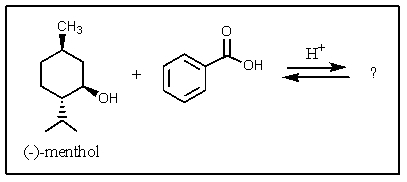
A) ![]()
B) ![]()
C) mixture of A and B
D) None of these.
E) No reaction occurs.
G) B) and E)
Correct Answer

verified
Correct Answer
verified
Multiple Choice
Lactones are:
A) Cyclic amides
B) Cyclic anhydrides
C) Cyclic esters
D) Cyclic acids
E) Cyclic ketones
G) C) and D)
Correct Answer

verified
Correct Answer
verified
Multiple Choice
Predict the product of the following reaction: 
A) ![]()
B) ![]()
C) ![]()
D) ![]()
E) None of these.
G) B) and C)
Correct Answer

verified
Correct Answer
verified
Multiple Choice
What would be the products of the following reaction? 
A) CH3CH2CH2CH2NH(CH3) + H2O
B) CH3NHC(=O) CH2CH2CH3 + CH3OH
C) CH3CH2CH2CONH2 + CH3CH2OH
D) CH3OH + CH3CH2CH2OC(=O) NHCH3
E) CH3CH2CH2NH(CH3) COCH3 + H2O
G) A) and B)
Correct Answer

verified
Correct Answer
verified
Showing 21 - 40 of 44
Related Exams